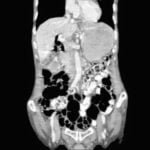
Jaundice : An early evaluation can prevent injury to the liver
Overview:
Jaundice is a term used to describe the yellowing of the skin and the whites of the eyes.
It’s caused by a build-up of a substance called bilirubin in the blood and body’s tissues.
Signs of jaundice:
The most common signs of jaundice are:
yellowing of the skin, eyes and the lining of the inside of parts of the body, such as the mouth and nose (mucus membrane)
pale-coloured stools
dark-coloured urine
When to seek medical advice?
Always seek immediate medical advice if you develop the above signs of jaundice. They’re a warning sign that something is wrong with the normal processes of your body.
Types of jaundice:
There are three types of jaundice depending on what’s disrupting the normal removal of bilirubin from the body. They are:
1.Pre-hepatic jaundice – the disruption happens before bilirubin has been transported from the blood to the liver; it’s caused by conditions such as sickle cell anaemia and haemolytic anaemia
2.Intra-hepatic jaundice (also known as hepatocellular jaundice) – the disruption happens inside the liver; it’s caused by conditions such as Gilbert’s syndrome, cirrhosis or other liver damage
3.Post-hepatic jaundice (also known as obstructive jaundice) – the disruption prevents the bile (and the bilirubin inside it) from draining out of the gallbladder and into the digestive system; it’s caused by conditions such as gallstones or tumours
Who’s at risk?
Intra-hepatic and post-hepatic jaundice are more common in middle-aged and elderly people than in the young.
Pre-hepatic jaundice can affect people of all ages, including children.
Certain lifestyle changes may help prevent jaundice.
For example,
- maintaining a healthy weight,
- not drinking alcohol, and minimising your risk of hepatitis, will all help.
Diagnosing jaundice
If you have jaundice, you’ll have a number of tests to find out how severe it is and determine the underlying cause.
You’ll probably have a urine test and liver function and blood tests.
If intra-hepatic jaundice or post-hepatic jaundice is suspected, it’s often possible to confirm the diagnosis using imaging tests to check for abnormalities inside the liver or bile duct systems.
Treating jaundice
Treatment for jaundice in adults and older children depends on what’s causing it. This may involve treating the underlying condition, a blood transfusion or surgery.
Preventing jaundice:
It’s not possible to prevent all cases of jaundice because it can be caused by a wide range of conditions or circumstances.
However, you can take precautions to minimise your risk of developing jaundice. These include:
1.Never take alcohol. No dose is safe
2.Maintaining a healthy weight for your height and build
3.Ensuring you’re vaccinated against hepatitis B .
4.Minimising your risk of exposure to hepatitis C because there’s currently no vaccine for the condition
4.Not injecting illegal drugs, such as heroin, or making sure that you don’t share drug injecting equipment if you do
New-born jaundice
the jaundice. At a very young age, the various systems the body uses to remove bilirubin from the body aren’t fully developed.
New born jaundice isn’t usually a cause for concern and often resolves within two weeks without treatment please seek medical advice always
WORD OF CAUTION IN NEWBORN JAUNDICE
Seek medical advice to RULE OUT BILIARY ATRESIA
Join the mailing list!
Get the latest articles delivered right to your inbox!




